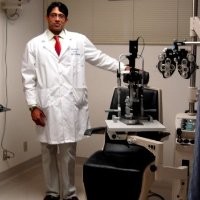In a significant development, researchers from Weill Cornell Medicine have pioneered a novel preclinical model for studying Parkinson’s disease progression. This ground-breaking model could potentially simplify the process of diagnosing the condition in individuals.
This research, featured in Nature Communications on July 23, focused on the role of a key component involved in protein transportation within the light-detecting rod cells of mice. The researchers discovered that blocking this component led to the buildup of aggregates of a protein known as alpha-synuclein in the retina of mice. These protein aggregates are commonly found in patients diagnosed with Parkinson’s disease.
Dr. Ching-Hwa Sung, a respected figure in Stem Cell Research and a professor of cell biology in ophthalmology at Weill Cornell Medicine, stated, “This model is extraordinarily unique, as it mirrors the pathology of human Parkinson’s more closely than other mouse models.”
Parkinson’s disease is the second most prevalent neurodegenerative disease after Alzheimer’s, impacting around one million Americans. Annually, nearly 90,000 new cases are diagnosed in the United States. Despite its popular association with motor function disorders, Parkinson’s can have far-reaching effects, including early vision problems, dementia, sleep disorders, and decreased intestinal function.
The study involved the creation of a strain of mice genetically engineered to lack the gene for a protein named VPS35 in their rod cells, the primary light-sensing neurons of the retina. VPS35 plays an instrumental role in directing molecules to their appropriate locations within the cell, including the disposal of abnormal proteins. Genetic mutations in VPS35 have been linked to a form of Parkinson’s disease that runs in families.
The research team noted that the lack of VPS35 led to a loss of synapses or neural connection points, even in young mice, resulting in vision impairment akin to Parkinson’s patients. As these affected rod cells began to die, the mouse retinas exhibited large, insoluble inclusions resembling Lewy bodies, a hallmark of Parkinson’s disease.
This study also uncovered that VPS35 plays a part in preventing the aggregation of alpha-synuclein, not just in its disposal. “We believe this is the reason why the absence of this protein had such a strong impact,” Dr. Sung explained.
Dr. Sung believes that this innovative model could be invaluable for understanding disease mechanisms and evaluating potential treatments. The model’s benefits include a rapidly developing disease process and the absence of any artificial modification to the mice’s alpha-synuclein.
The research also suggests a potential new approach for detecting Parkinson’s disease. Even in three-month-old mice lacking VPS35 in their rod cells, researchers could use a standard ophthalmological device called a fundoscope to spot bright spots of “autofluorescence” caused by lipofuscin molecules, which are associated with alpha-synuclein aggregates. Dr. Sung and her international team are currently planning a clinical trial of this method.
Dr. Sung intends to use the VPS35-knockout mice model for studying Alzheimer’s disease too, as VPS35 mutations have also been linked to this condition. “We anticipate an intriguing journey of exploration,” Dr. Sung concluded.
The study was partially funded by the National Eye Institute and the National Institute on Aging, both part of the National Institutes of Health.


Comments are closed for this post.